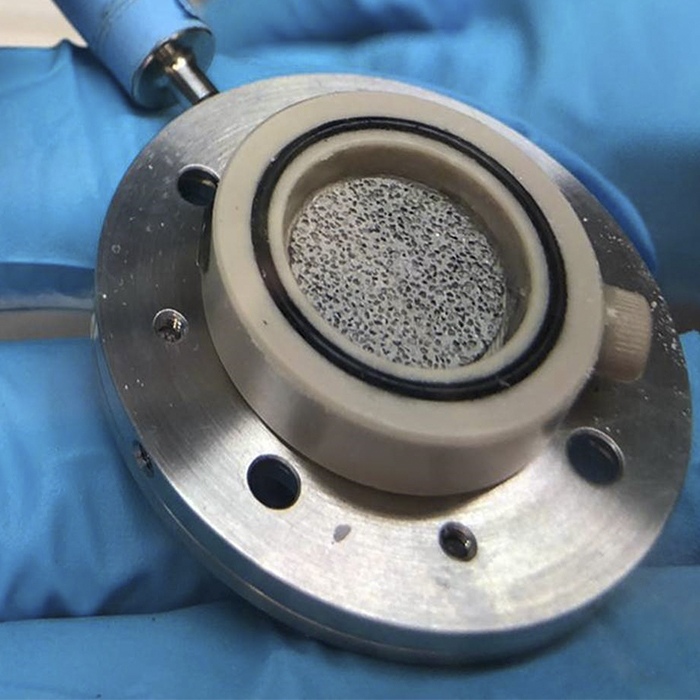and lessons that define our identities.
A Collection of Our Interviews
Architecture
In September 2024, Manchester United, the world′s most storied football club, unveiled an audacious vision for the future of its hallowed Old Trafford Stadium District. Appointing the globally revered architectural firm Foster + Partners, the club has set out to redefine not just its iconic home but the very fabric of its surrounding community. Led by Lord Norman Foster, this masterplan transcends the boundaries of a mere stadium upgrade—it aspires to craft a world-class football destination, a vibrant mixed-use urban quarter, and a beacon of sustainable regeneration that could resonate far beyond Manchester′s skyline.
A Stadium at the Heart of Renewal
At the core of this ambitious endeavor lies a reimagined Old Trafford: a landmark stadium designed to elevate the fan experience while catalyzing social and economic transformation. The illustrative concepts, unveiled alongside the broader masterplan, depict a 100,000-seater arena that inverts traditional stadium design. Rather than an insular fortress, Foster + Partners envisions an outward-facing…

Photography
In an age drowning in fleeting snapshots, Italian photographer Roberto Sysa Moiola stands apart, chasing the wild soul of remote landscapes. From the icy shimmer of Finnish frozen lakes to the storm-lashed cliffs of Norway′s Lofoten Islands, his lens captures both the raw majesty and fragile pulse of Earth′s untamed corners.
Recently, we sat down with him to uncover the grit, beauty, and shifting climates behind his 25-year career.
A Hiker′s Lens
Moiola′s journey kicked off in the Alps, his lifelong backyard. ″I started as a passionate hiker,″ he recalls. ″Living in the mountains, I was always trekking, and the stunning scenes kept begging me to shoot.″ What began as a way to freeze memories morphed into…
Technology
Scientists have discovered that transforming tin into a highly porous foam structure may solve one of the biggest challenges facing next-generation batteries. This innovative approach, detailed in a recent study from Helmholtz-Zentrum Berlin (HZB), could pave the way for energy storage that packs significantly more power into the same space—think smartphones or electric vehicles with longer-lasting juice.
Beyond Graphite: The Metal Electrode Promise
For decades, lithium-ion batteries have leaned on graphite electrodes to shuttle lithium ions during charge and discharge cycles. Graphite′s reliable, but its capacity tops out at 372 mAh g⁻¹, pushing researchers to hunt for denser alternatives. Tin, with a theoretical capacity of 993 mAh g⁻¹—nearly triple graphite′s—stands out. ″Tin′s abundant, non-toxic, and can store way more lithium ions,″ says Dr. Sebastian Risse of HZB, co-author of the study published in Advanced Science. Trouble is, when lithium floods in, tin expands up to 260%, cracking and crumbling over time.
Our Narratives is a collection of original artwork, research, and commentary that fully encapsulates and displays each creator′s unique stories and experiences, with the purpose of inspiring as many readers as possible.
Recent Interviews

Sculpted Spirit: Chris Wilson’s Natural Poetry in Wood
Within the hushed confines of Chris Wilson’s atelier, raw timber undergoes a remarkable transformation, emerging as exquisite wildlife sculptures that crystallize nature’s most transient moments. His artistic masterpieces are like life poems frozen in time: a delicate hummingbird…

Redefining Urban Space: Heatherwick Studio’s Visionary Transformation of Louisville’s Belvedere
In the heart of downtown Louisville, an aging icon is poised for renaissance. The Belvedere—a sprawling elevated plaza overlooking the Ohio River—stands at the precipice of a transformation that promises to redefine Kentucky’s largest city and its relationship with its waterfront heritage.

Mountain Mists in Dreams: Li Wei Chen’s Artistic World and Spiritual Journey
Between the secluded valleys of Keelung’s Lion Ball Ridge, a young girl traversed shadowy mountain paths daily, her heart filled with trepidation. Decades later, this child who once feared the forested ridges now reveals the ethereal beauty of…
Articles
Architecture/Design

Reimagining a Legacy: Foster + Partners Presents Vision for New Manchester United Stadium

Redefining Urban Space: Heatherwick Studio’s Visionary Transformation of Louisville’s Belvedere

A New Cultural Icon for Kosovo: BIG and ALB-Architect Reveal a Fluid, Photovoltaic Opera House in Prishtina

Zaha Hadid Architects to Design Nikola Tesla Museum in Belgrade, Serbia
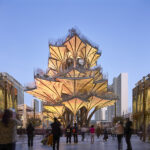
Xi’an’s New Landmark: Heatherwick Studio Blends Vertical Gardens with Traditional Tilework

Riyadh Metro: A Paradigm Shift in Urban Mobility

Mars Dune Alpha: Pioneering a New Era of Space Architecture

Singapore’s Vertical Garden: CapitaSpring Wins World’s Best High-Rise
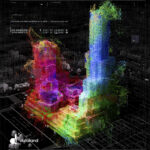
DATALAND: The World’s First AI Art Museum Set to Open in Los Angeles

Ithra and Colab Unite to Launch Pioneering Materials Library in Saudi Arabia

Energy Vault and SOM Unveil Revolutionary Gravity Energy Storage Partnership

Zaha Hadid Architects Weaves Floating Indoor and Outdoor Spaces for Sejong Cultural Centre

A Harmonious Blend of Danish and Japanese Architecture: NOT A HOTEL on Sagi Island
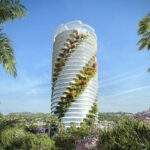
Spiraling Toward the Future: The Star’s Visionary Hollywood Office Tower

Dr. Mattheos Santamouris: Leading the Charge in Urban Cooling Innovations at UNSW Sydney
Art

Sculpted Spirit: Chris Wilson’s Natural Poetry in Wood

Mountain Mists in Dreams: Li Wei Chen’s Artistic World and Spiritual Journey
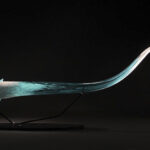
Glass Beyond Time: Stephen Pon’s Human Odyssey

Reflections of the Soul: The Art of Kuo, Hsin-i

Dragon’s Tender Whispers: The Artistic Journey of Junko Umemiya
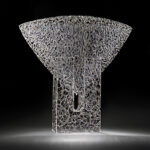
Refracting Brilliance: The Glass Artistry of Brent Kee Young

Taiwan’s Emerging Artist Julia Hung: a Dynamic Perspective on Multicultural Art
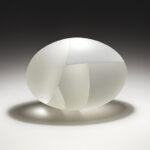
Fostering Aesthetic Elegance: The Visionary Glass Art of Jiyong Lee
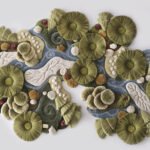
Vanessa Barragão: The Fusion of Textile Art and Environmentalism

Harmonizing Art, Nature and Mathematics: The Captivating Kinetic Sculptures of Reuben Margolin

The Sublime Nature Beauty Portrayed by John MacDonald

A World “Neither Here nor There” as Portrayed by Nathan Walsh

DRIFT’s Performative Installations that Connect to Nature

A Pure Pursuit of Harmonious Coexistence with Nature by Sculptor Christian Verginer

The Dancing Iris by Ingrid Elias
Photography

From Alpine Peaks to Arctic Vistas: Roberto Sysa Moiola’s Odyssey Through Light and Landscape

A Journey from Southern Italy to Scotland’s Ancient Woodlands: Fortunato Gatto’s Dialogue with Nature

The Sky is Her Canvas: Joanna L. Steidle’s Journey to Redefining Drone Photography
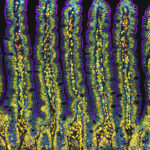
The Art of the Invisible: How One Scientist’s Failed Experiment Captured the Hidden Beauty of Life

Orchestrating Ephemeral Moments: The Transcendent Vision of Jiří Hřebíček in Contemporary Wildlife Photography

Capturing Change from Above: The Aerial Vision of Photographer Nilmini De Silva

Stargazer Extraordinaire: Gary Lopez’s Fusion of Art and Astrophotography
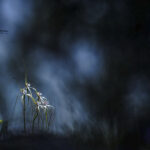
The Ethereal Beauty of Deception: Georgina Steytler’s “March of the Spider Orchids”

The Microscopic Muse: Wim van Egmond’s Remarkable Journey in Art and Science




Through the Lens: Ju Shen Lee’s Journey to Document the Beauty and Bonds in South East Asia

Fusing Art and Science: Małgorzata Lisowska’s Exploration of Healing Through Microscope Photography

A Glimpse into the Microcosm: Hassanain Qambari’s Visionary Triumph in Nikon Small World Competition
Artisan and Craft
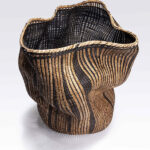
Polly Adams Sutton’s ‘Ebb Tide’: A Masterpiece of Contemporary Basketry

The Fascination of Bamboo Art: An Interview with Taiwanese Bamboo Artist Ching-Ke Lin
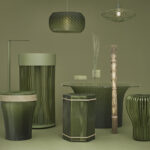
Tatami Reimagined: The Creative Journey of the Tatami ReFab Project

Unique Furniture Designs Combine Simplicity with Functionality by Deniz Aktay
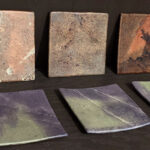
From Wall Hanging to Tableware – The Appeal of Washi
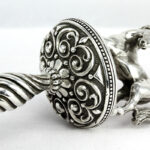
Garri Dadyan, A Virtuoso of Metal Work
Ceramics/Pottery
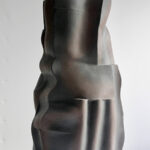
Sculpting the Void: Ken Eastman’s Journey Through Form and Emptiness

Curtis Benzle’s Artistic Voyage: Refining the Elegance of Colored Translucent Porcelain
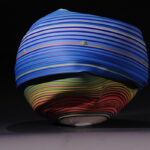
Mesmerized Wonders of Yuan-te Wang’s Ceramic Art

Paradigm of Perfection – Inaba’s Ceramics

“Kutani” Ware’s New Look By Kazuyoshi Kitamura
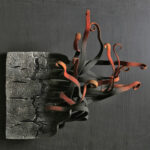
The Unyieldingly Talented Alberto Bustos
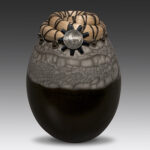
The Hands Bring the Indigenous & Modern Worlds Together by Valerie Seaberg
Digital Art/Media Art

Kahori Maki: Motion’s Muse and the Depth of Multi-Dimensional Artistry

Nature, Data, and Art: The Innovative Fusion in Claude Studio’s Media Artistry

Kathrin Federer’s Mesmerizing Digital Art
Community

Meet a Few of the Heroes behind the Marin County Genealogical Society

Guardians of Wild Birds in Marin, CA

How I Captured Mail Thieves
Conservation and Sustainability

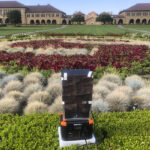
Revolutionizing Chemistry: A New Frontier in Sustainable Innovation

Breaking the Forever Chain: A New Hope for PFAS-Free Water

Bacteria-Powered Plastics: A Breakthrough in Thermally Stable and Biodegradable Polymers

Israeli Scientists Utilize CRISPR Technology for Sustainable Farming: Advancing Towards Water-Saving Tomato Cultivation

Dr. Marco Contardi: Pioneering Coral Protection Research with Curcumin

Major Breakthrough in Synthetic Spider Silk Fabrication Made by Dr. Fuzhong Zhang

“Rootfull” Design by Zena Holloway


The Importance of Preserving Ancient Trees by Dr. Gianluca Piovesan

CCILU, the Forefront of Sustainable Shoe Making
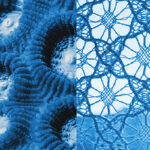
Bring New Life to Coral Reefs by Jérémy Gobé
Food/Health

Harnessing AI to Revolutionize Dementia Diagnosis with EEGs by Researchers at Mayo Clinic

Sea Cucumbers: A Promising Natural Solution for Diabetes Prevention and Management by Dr. Permal Deo

“Feed Your Brain” and “Feed Your Brain Cookbook“- Books on How to Nourish Your Brain by Dr. Delia McCabe

Chocolate Artistry by Luis Amado

Creating the Foodloose ‘Silk Road’ between the West and the East

Meera Cooks Nourishing Delicious Food
History & Prehistory

Ancient Wisdom, Modern Solutions: How Maya Reservoirs Inspire Sustainable Water Management
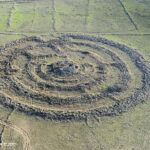
The Mystery of the ‘Wheel of Ghosts’: Ancient Observatory or Something Else?
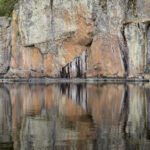
Echoes of Time: Unveiling the Sonic Tapestry of Ancient Finnish Rock Art

Ancient Insights: Unveiling the Mysteries of Rock Art in the Colombian Amazon

Sima Qian and Beyond by History Professor Grant Hardy
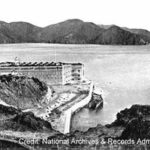
The Pacific Squadron of Imperial Russian Navy at San Francisco in 1863
Literature & Music

Special Dedication from Chener Cherry Yuan
![[Emily Dickinson’s manuscript of Because I Could Not Stop for Death; Pinterest]](https://ournarratives.net/wp-content/uploads/2020/09/1-1-150x150.jpg)
Because I Could Not Stop for Death (479) ~ Emily Dickinson (1830-1886)

Pilgrimage to Emptiness in Tang Poetry
Medicine

Starving Cancer: How Engineered Fat Cells Could Revolutionize Treatment

Gut Virus Linked to Alzheimer’s: New Research Highlights a Surprising Brain-Gut Connection
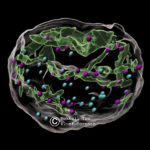

A Glimpse into the Microcosm: Hassanain Qambari’s Visionary Triumph in Nikon Small World Competition
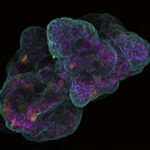
Revolutionizing Regenerative Medicine: Dr. Kristopher Kilian’s Breakthrough with Trpzip Hydrogel
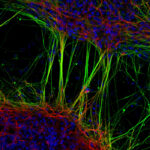
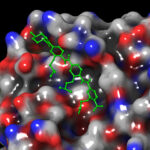
ERX-41, A New Paradigm for Cancer Treatment by Dr. Jung-Mo Ahn

Dr. John Sayer’s Discovery of TULP3-related Ciliopathy, A Breakthrough in Gene Medicine


Interview with Dr. Trounce, Director of Stanford Biosecurity

Andrew Hessel and His Creation
Philosophy

Riding the Waves of Change An Introduction to the I Ching

The Patterns of Life
Science
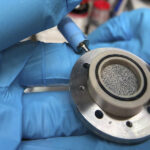
Innovative Battery Electrode Made From Tin Foam: X-Ray Imaging Reveals Internal Evolution

Eight Arms, Infinite Motion: Unraveling the Octopus’s Extraordinary Dexterity

The Quantum Cipher: When Light Becomes the Unbreakable Lock of Tomorrow’s Digital Fortress
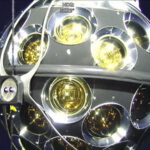
The Deep-Sea Revelation: KM3NeT Detects the Most Energetic Neutrino Ever Observed

When Quantum Meets Classical: A New Era of Internet Communication

Smart Crystals Draw Inspiration from Desert Life to Revolutionize Water Harvesting

Navigating with Precision: How Kuhl’s Pipistrelle Bats Use Acoustic Maps and Vision

Unveiling Order in Cosmic Chaos: A Revolutionary Look at the Three-Body Problem

Nature’s Hidden Artistry: Unveiling the Secret Blueprints of Flower Patterns
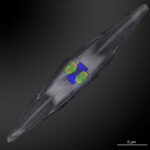
Uncovering a New Marine Symbiosis: Rhizobia and Diatoms Partner to Fix Nitrogen and Boost Marine Productivity

Groundbreaking Discovery: Orangutan Uses Medicinal Plant for Wound Treatment
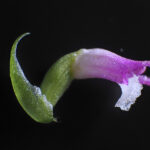
Unveiling Japan’s Hidden Flora: Dr. Kenji Suetsugu’s Botanical Discoveries

Unraveling Our Tailless Heritage: Dr. Bo Xia’s Groundbreaking Discovery on Human Evolution
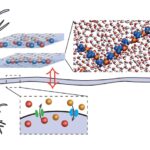
Dr. Paul Robin’s Ionic Computing Revolution: Artificial Neurons Shaping the New Era of Future Electronic Memory
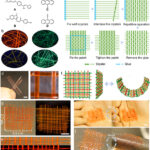
Travel

Northwest Loop Trip, China

All White in Wulan Butong, Inner Mongolia, China

{My China Trips} Mt. Huashan Trip

North Yellow Mountain ~ Baishi Mountain
Get In Touch
We would like to hear from you.

